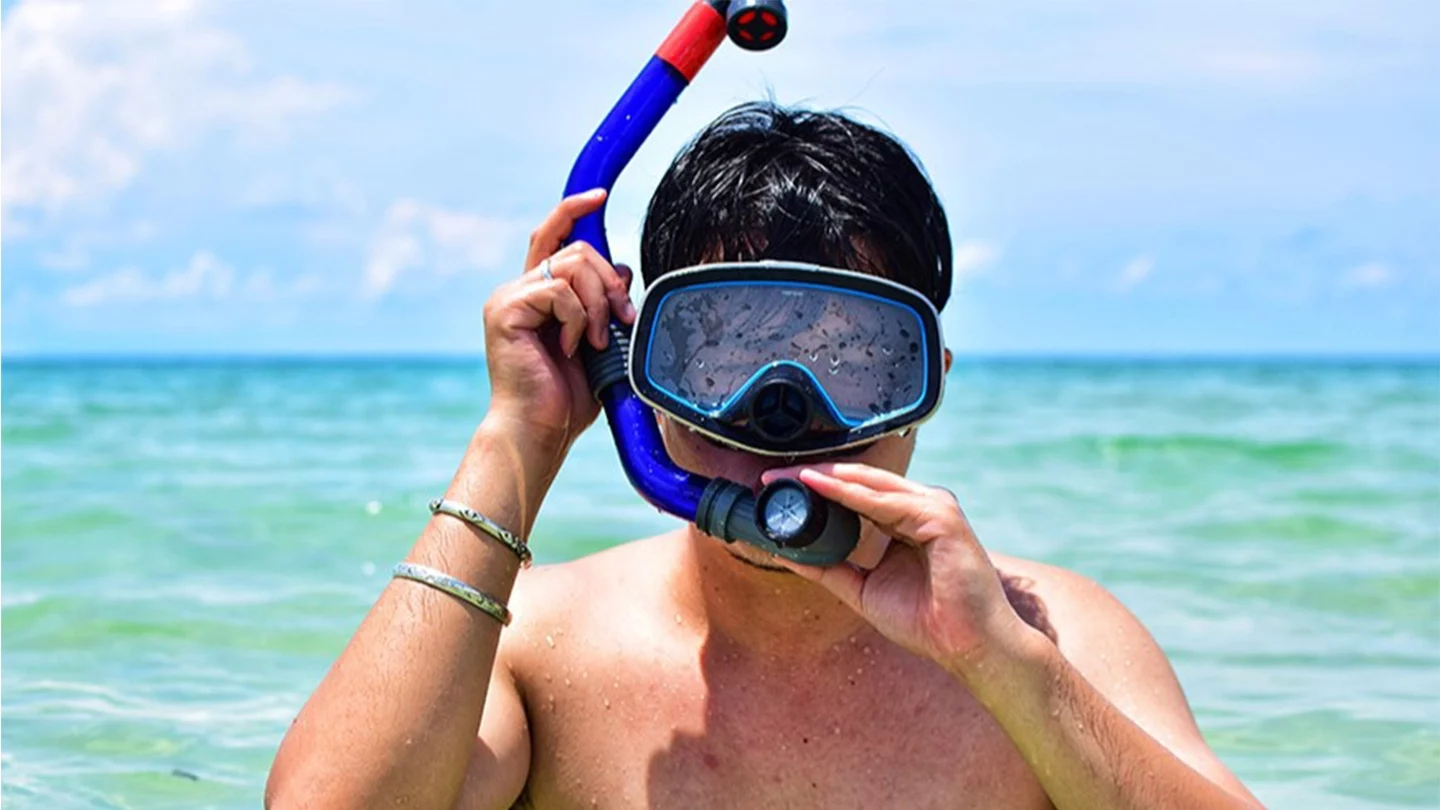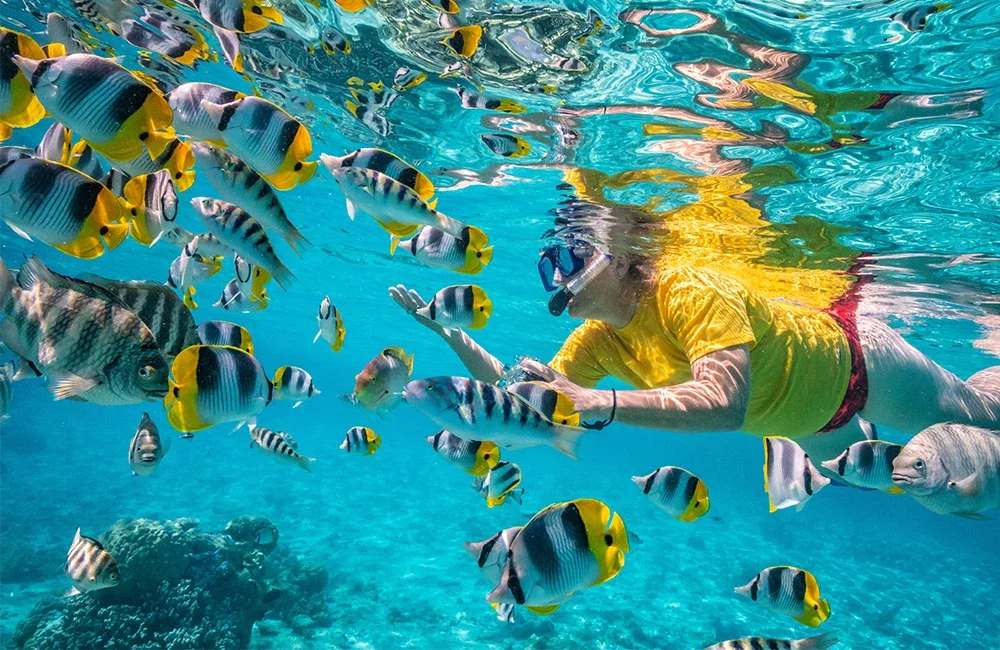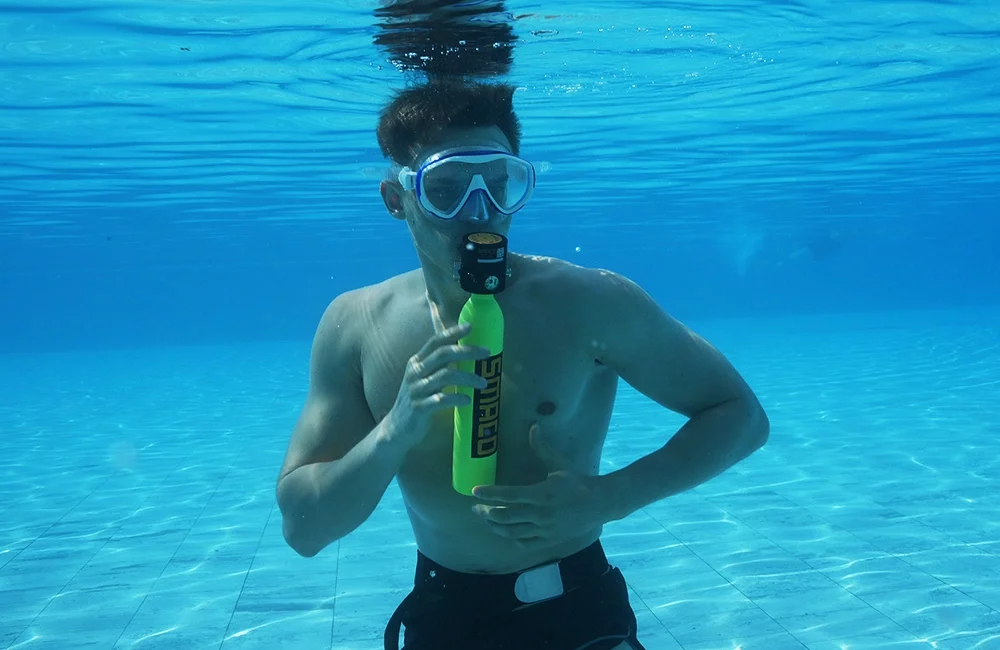Blog
Snorkeling Safety Guide: How to Handle Unexpected Situations While Snorkeling
Snorkeling is a fantastic way to explore underwater, but knowing how to handle emergencies is crucial. This guide offers expert tips on preventing and managing common snorkeling issues, ensuring a safe, enjoyable experience.
Introduction
Snorkeling is a widely enjoyed water activity that requires only basic skills—no deep diving or advanced swimming techniques are necessary, making it accessible for beginners eager to explore the underwater world. However, like any water sport, snorkeling carries some risks, particularly in unforeseen situations that can take snorkelers by surprise. Understanding how to manage these scenarios not only improves safety but also enhances the overall experience. In the following sections, we’ll examine common snorkeling emergencies and provide practical strategies for prevention and effective response.
Common Snorkeling Emergencies and Solutions
Water Leakage in the Mask
Mask leakage is a common issue that can disrupt the snorkeling experience and even pose safety risks. Causes of mask leakage often include an improperly fitted mask, incorrect wearing technique, or a broken seal caused to hair, sand, or other debris obstructing the skirt. Additionally, certain facial features or movements, such as smiling or talking, can create gaps that allow water to enter.
Solution:
- Remain calm.
- Lift the mask above the water, press the top edge with your fingers, and gently exhale to expel water from the bottom of the mask.
- If leaking continues, it is typically due to an incorrect mask size or improper fit. Adjust the mask straps so that the mask edges sit closely against the face without applying excessive pressure.
Preventive Measures:
- Select a high-quality mask that fits properly. When trying on the mask, inhale gently to test its fit and seal.
- Keep the mask and skin clean, avoiding oil or sunscreen residue that can interfere with the seal.
- Regularly inspect the mask’s edges and straps for any wear or deformation, as this can help reduce leakage and improve the safety and comfort of snorkeling.
Fog on the mirror
Mask fogging is a common issue that can blur vision and impact the snorkeling experience. Several factors contribute to mask fogging:
- Temperature Difference: When the temperature inside the mask is warmer than the cooler water outside, water vapor condenses on the inner surface, creating fog.
- Humidity: Moisture inside the mask can easily turn to vapor, especially from breath humidity—a common issue for beginners.
3. Surface impurities: Dust, oil, or residual substances from manufacturing on the mask’s interior tend to attract water vapor, promoting fog formation

Solution:
1.Stay relaxed and calm to avoid feelings of panic.
2.Rinse the Mask: Gently lift your head and slightly pull the mask away from your face, allowing it to partially fill with water. Face downward and gently shake your head to let the seawater rinse the mask’s interior. Drain the water and reposition the mask to ensure a secure seal.
3.Adjust the Mask: If fogging continues, it is often due to an improperly sized or poorly fitting mask. Adjust the mask straps so that the edges fit snugly against your face without excessive pressure.
Preventive Measures:
1.Perform anti fog treatment regularly: Regularly apply anti-fog solutions to maintain the mask’s clarity and prevent fogging. Avoid touching the inside of the lens.
- Keep the Mask Clean: After each use, thoroughly rinse the mask and allow it to dry completely. Avoid leaving sunscreen or oils on the mask, as they can worsen fogging.
- Choose a High-Quality Mask: Premium masks typically have better anti-fog features. Opt for reputable brands known for their quality and performance.
4. Avoid Drastic Temperature Changes: Significant temperature differences between water and air can increase the likelihood of fogging. Adjust the water temperature and ensure a proper mask fit to minimize this effect.
Difficulty Breathing
Difficulty breathing while snorkeling is common and can cause discomfort or even panic, impacting the overall experience. The main causes of breathing difficulties include poorly designed or low-quality equipment, incorrect posture, psychological factors, and environmental conditions.
Solutions:
1.Stay Calm,Float on the water’s surface and take slow, deep breaths to help restore a steady rhythm and ease any tension.
2.Maintain a Balanced Posture: Keep your head slightly lowered so that the snorkel remains above the water. Avoid excessive head or body tilting, which could allow water to enter the snorkel.
3.Clear the Snorkel: If water enters the snorkel, exhale forcefully to expel it, ensuring an open airway. If a significant amount of water enters, lift your head slightly to allow it to drain more easily.
Preventive Measures:
1.Choose Quality Equipment: Use a well-designed snorkel with an appropriate tube diameter to reduce breathing resistance. Regularly check for wear or damage to ensure the equipment functions properly.
2.Proper Fit and Acclimation: Once your mask and snorkel are properly fitted, practice in shallow water to ensure a good seal and clear breathing. This will help you gradually adjust to underwater breathing.
3.Control Your Breathing Rhythm: Practice slow, deep breathing before snorkeling to build control. Maintaining a steady pace helps you stay relaxed underwater and reduces any sense of urgency.
4.Select Suitable Conditions: Avoid snorkeling in areas with strong currents or heavy waves. Opt for calm, clear waters to minimize environmental stressors.
Inhaling Water
Choking while snorkeling is common, especially for beginners, and is often caused by several factors. Improper posture, wave impact, or excessive head rotation can allow water to enter the snorkel. Poorly fitted masks may let water seep in, which can then enter the snorkel or mouth. Additionally, beginners may inadvertently breathe through their nose, disrupting the mask’s pressure and allowing water to enter. Environmental conditions, such as strong waves or currents, also increase the risk of water entering the snorkel, which can lead to choking.
Solution:
1.Stay Calm: If water enters the snorkel, remain calm. Float to the surface and take deep breaths to restore a steady breathing rhythm.
2.Clear Water from the Snorkel: Lift your head slightly and exhale through the snorkel to expel any water, ensuring a clear airflow.
3.Adjust the Mask: If water enters the mask, lift your head, loosen the mask slightly to drain the water, then reseal it to ensure a snug fit.
Preventive Measures:
1.Choose Proper Equipment: Select well-fitting snorkeling gear, ensuring both mask and snorkel are properly sized and sealed.
2.Maintain Correct Posture: Keep your head steady and avoid excessive turning to minimize water entry.
3.Practice Breathing: Before deep water, practice mouth breathing to maintain mask pressure balance and prevent water leaks.
4.Select Suitable Conditions: Avoid snorkeling in areas with strong currents or high waves to reduce risk.
Cramps
Extended periods of physical activity or exposure to cold water can lead to muscle cramps, especially in the legs and feet. Cramps occur when muscles contract involuntarily, often causing sudden pain and limiting mobility, which can be challenging while snorkeling. Cramps are commonly caused by muscle fatigue, dehydration, or the body’s reaction to colder water temperatures.
Solution:
1.Remain calm and float on your back to relieve pressure.
2.Stretch the Muscle: For leg cramps, gently pull your toes toward your body to stretch the calf muscles. For foot cramps, flex and extend your foot to relieve tension.
3.Massage the Area: Use your hands to massage the affected muscle, helping to restore blood flow and reduce tightness.
Preventive Measures:
1.Warm Up: Stretch before snorkeling to prepare muscles for activity.
2.Stay Hydrated: Drink water to prevent dehydration, a common contributor to cramps.
3.Stay Warm: In cold water, consider wearing a wetsuit to maintain muscle warmth and reduce cramping risk.
4.Pace Yourself: Avoid overexertion by taking breaks to rest and relax your muscles during extended snorkeling sessions.
Encounters with Marine Life
When snorkeling, marine organisms like coral, sea urchins, and some jellyfish can pose risks if touched or approached too closely. Corals can cause cuts, sea urchin spines may puncture the skin and release toxins, and jellyfish stings can lead to irritation or allergic reactions. It is safest to maintain a respectful distance from all marine life to avoid injury and protect the ecosystem.

Solution:
1.Avoid Contact: Refrain from touching or approaching any unfamiliar marine animals, as even harmless-looking creatures may pose hidden risks.
2.Respond to Injury: If stung or injured, stop any bleeding, signal for assistance if needed, and carefully make your way to the surface. Seek medical attention promptly.
3.Treat the Wound: Once back on shore, rinse the wound thoroughly with clean water, apply a disinfectant, and cover with a sterile bandage to prevent infection.
Preventive Measures:
1.Maintain Distance: Keep a safe distance from corals, sea urchins, and other marine life to minimize accidental contact.
2.Wear Protective Gear: Use protective gloves and snorkeling shoes to reduce the risk of injury from sharp or stinging marine objects, enhancing safety in the water.
Jellyfish Stings
Jellyfish are common in warm waters, and contact with their tentacles can cause painful stings due to toxin-releasing cells called nematocysts. Stings typically lead to pain, redness, and swelling, and in some cases may cause allergic reactions requiring medical attention. Severe stings can result in symptoms such as breathing difficulties, dizziness, or nausea, particularly in individuals sensitive to the toxins.
Solution:
1.Do Not Touch the Sting Area: Avoid touching or rubbing the sting site, as this can cause the toxins to spread further into the skin.
2.Rinse with Saltwater: Once ashore, rinse the affected area with saltwater (not freshwater) to help remove any tentacle remnants without activating additional nematocysts.
3.Remove Tentacle Fragments: Use the edge of a credit card or another flat, rigid object to gently scrape off any remaining tentacle fragments.
Preventive Measures:
1.Heed Jellyfish Warnings: Pay attention to local jellyfish advisories and avoid snorkeling in areas where jellyfish are frequently sighted.
2.Wear Protective Gear: Opt for well-fitting protective clothing, such as a rash guard or full-body suit, to minimize skin exposure and reduce the risk of stings.
Strong Currents and Rip Currents
Strong currents, including rip currents, can quickly pull swimmers away from the shore, creating challenging conditions that make it difficult to swim back to safety.
Solution:
1.Remain calm to avoid exhaustion and panic. Focus on conserving energy and breathing steadily.
2.Swim parallel to the shore rather than against the current, moving out of the current’s narrow path. Once free, swim diagonally back to shore.
3.If you’re too tired to swim, float on your back to conserve energy. Wave one arm to signal for help if needed, staying visible to rescuers.
4.Identify Exit Points: If the current pushes you further out, look for areas where you can safely exit the water, such as calm spots or designated snorkeling zones.
Preventive Measures:
1.Check Weather and Tide Conditions: Always review local weather, tide, and current reports before snorkeling to avoid areas with strong currents or hazardous conditions.
2.Observe the Water: Watch for signs of strong currents, such as choppy water, foamy streaks, or gaps in breaking waves, which may indicate a rip current.
3.Snorkel with a Buddy: Always snorkel with a buddy and in designated areas monitored by lifeguards to ensure quick assistance if needed.
4.Know Your Limits: Assess your swimming ability and stay within areas suited to your experience level, avoiding conditions you may not be able to handle comfortably.
Safety Tips and Preventive Measures for Snorkeling
To reduce the likelihood of emergencies, here are some general snorkeling safety tips:
1.Snorkel with a Buddy: Always snorkel with a partner for mutual safety and assistance if needed.
2.Check Conditions: Review weather, tide, and water conditions before entering the water, avoiding snorkeling in rough seas or strong currents.
3. Use Proper Gear: Ensure your mask, snorkel, and fins fit well and are in good condition to prevent discomfort and fatigue..

4.Practice Breathing: Get comfortable with your snorkel in shallow water to conserve energy and remain relaxed.
5.Respect Marine Life: Observe marine animals from a distance and avoid touching coral or sea creatures.
6.Stay Hydrated and Protected: Use waterproof sunscreen and drink water to prevent sunburn and dehydration.
7.Know Your Limits: Stay within areas suited to your experience level and avoid deep waters if you are inexperienced.
8. Signal for Help: If in distress, signal by waving an arm and stay calm while awaiting assistance.
Conclusion
Snorkeling is a rewarding outdoor activity, and with proper preparation and precautionary measures, you can enhance both safety and enjoyment. By following these safety tips and response techniques, you can significantly reduce risks and make each snorkeling experience more enjoyable. Before each adventure, ensure your equipment is ready, stay aware of your surroundings, and prioritize safety at every step.
